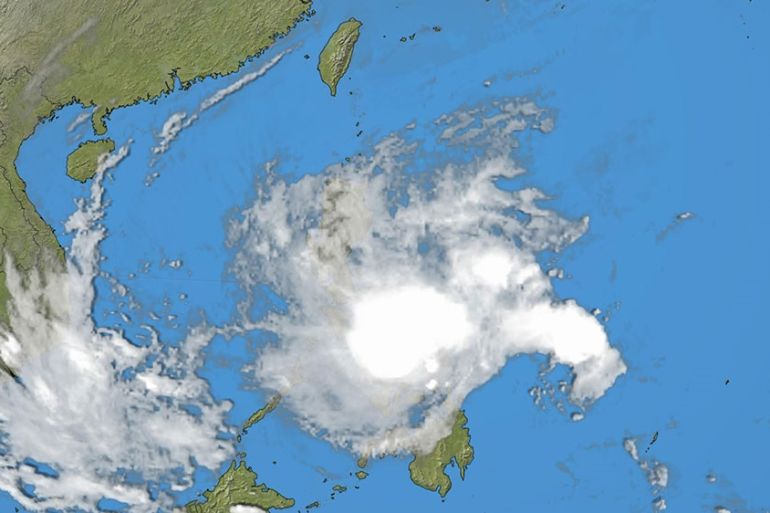Tropical depression threatens flooding in Philippines
The storm follows the same track as 2013’s devastating typhoon Haiyan.

A tropical depression is bringing torrential rain to the Philippines.
The downpours started in the western part of the country, with Guiuan reporting 61mm of rain in 24 hours before the storm made its landfall.
Keep reading
list of 4 itemsBeyond the Oil Age
‘I blame the government’: Poor Kenyans say no support amid record flooding
Photos: Southeast Asia swelters in record-setting heatwave
Guiuan was completely destroyed by super typhoon Haiyan, which devastated the Philippines in 2013. The Mayor of Guiuan, Christopher Gonzales, had put it at that time: “It’s total damage, 100 percent damage.”
The current storm, known in the Philippines as Usman, is following the same path as Haiyan, which killed over 8,000 people according to Reliefweb, part of the United Nations Office for the Coordination of Humanitarian Affairs.
The city of Tacloban also suffered widespread devastation in Haiyan, with a team of researchers from the University of Tokyo saying the massive waves on top of the storm surge had left water marks 14 metres above mean sea level.
Storm Usman is also likely to drive water into San Pablo Bay and could cause flooding around Tacloban, but the storm is far, far weaker, so the flooding is not expected to be severe.
Instead, the main problem from the tropical depression is likely to be caused by the amount of rain it brings.
It is expected to take 36 hours before it eventually clears the island of Palawan in the west of the country. This slow progress will ensure the country endures a prolonged onslaught of wet weather.
As much as 300mm of rain is expected in some areas, which is approximately the amount that usually falls in the entire month of December.
That much rain could cause rivers and streams to overflow their banks, triggering flash flooding, and could also lead to mudslides in the hilly terrain.
The Philippines is no stranger to tropical cyclones, with an average of 20 affecting the country and its surrounding waters each year.
The storms can hit in any month, but usually, June to September are the most active.